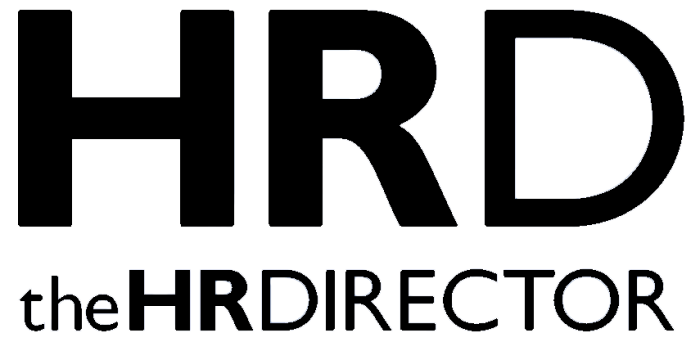I’ve always been open about my dyslexia, and more recently ADHD diagnosis. It’s a big part of who I am and how I think and work.
As a leader and a parent, it’s important to me to not only support others but to show that by embracing neurodivergent conditions, we can create workplaces that are innovative and successful and careers that are impactful and fulfilling.
Here are my top five ways tech can help you, or someone in your team, with day-to-day working life:
1. Avoiding sensory overload
Managing sensory overload is really important for people with a neurodivergent condition. For me, there are a few things that I use to help with this.
Microsoft offers a ‘Dark Mode’ in Windows, Office, Edge and most mobile systems. This changes the background to dark and text to white, making it easier for people with dyslexia and visual impairments to read and understand text.
Headsets are crucial for managing sensory input, especially for online meetings and voice dictation. I’ve tried out lots of headsets in my time and I’d recommend finding one that is comfortable for long wear, wireless for mobility and features a wideband audio microphone for clear voice-to-text application use. A double-sided headset is essential to balance auditory input with an effective noise cancellation to block out background noise.
Loop Earplugs are an amazing bit of tech, acting as active earplugs with AI-enabled noise-cancelling technology. They filter out background noise depending on the environment, helping focus on work or conversations.
2. Spelling & Grammar
Spelling and grammar has always been my nemesis. Luckily, we have a whole host of tools at our fingertips that can make life so much easier. For basic spelling and grammar checks, MS Office offers foundational tools that are ideal if you don’t need to write much. Windows also offers text suggestions, a feature that suggests words as you type, helping with spelling and sentence structure.
Auto correct and auto complete in Windows and Office automatically correct spelling and predict words, speeding up your work. Ensure you check the output of these though!
For frequent writing tasks, I’d recommend using Grammarly. It’s a powerful tool for people with dyslexia, offering advanced spell and grammar checks. It’s able to analyse text and learn your writing style and is available in free and paid versions (for enhanced functionality).
3. Planning & reminders
Planning and organisation can be challenging for so many people with neurodivergent conditions so it’s important we develop coping strategies that work for us. There are thousands of apps out there that can help take the hard work out of staying organised.
In my opinion, M365 Copilot offers substantial support for neurodivergent individuals. It can support by constructing messages with the right tone and length and break down complex tasks into manageable steps. It can capture and share key points and outcomes of online meetings – something I’ve found to hugely reduce cognitive load and ease task completion.
My other ‘must have’ is a Personal Digital Assistant (PDA). Think Alexa, Google Assistant and Apple’s Siri. They offer simple yet transformative functions, such as setting reminders and timers. Although integrating PDAs seamlessly into work and personal life is challenging due to security and data protection concerns, they still provide significant support. I’m a huge fan of mine, although my children sometimes hate this as I to set reminders for their house chores.
4. Voice-to-text
Voice-to-text can be a wonderful, free assistive technology for people with dyslexia and other neurodivergent conditions. It takes time to master and lots of practice to get the best out of it. I’ve been using voice-to-text applications for about 27 years and boy have they improved over the years, in no small part due to advancements in Machine Learning (LM).
Voice-to-text technology has seen significant improvements in Windows 11 and Office 365. Windows now allows dictation in almost all text input areas using the ‘Voice Typing’ function, activated by pressing the Windows Key and ‘H’.
Office 365 offers ‘Dictation’ via a microphone icon in most programs. While these tools are useful for light users, they are not yet as advanced as others. Dragon Speaking Professional is my favourite. It adapts to your voice and writing style, enabling almost 200 words per minute. I’ve been using Dragon for a long time, and it is still, in my opinion, the best.
The ‘Read Aloud’ feature in Edge and Office has seen many enhancements and now offers a more natural voice output. This function is useful for reading books, documents, web content and long emails, supporting successful multitasking. Microsoft OneNote offers an enhanced version for children, highlighting text as it reads aloud helping them follow the text as they hear the words. This is a tool I’d recommend for any parent with a dyslexic child.
5. Mind mapping
I use mind maps a lot, especially for complex solutions in work. Many people with neurodivergent conditions are exceptional visual thinkers, particularly those with dyslexia, who can visualise problems and solutions in a multidimensional way. For this reason, mind mapping can be a very effective tool for visualising workload. For anyone new to this concept I’d recommend reading “Use Both Sides of Your Brain” by Tony Buzan, who overcame dyslexia challenges through mind mapping. Beginning by practising with paper and coloured pens before using software will help with grasping the concept.
There are several applications that support mind mapping, including OneNote, which offers freehand options and templates, Miro, also has plenty of templates. Mindjet MindManager is another mind mapping tool. It helps break down thoughts, plans, and tasks into a visual format, these tools can help neurodivergent and neurotypical people alike retain information.
Looking ahead, the almighty rise of generative AI and machine learning, and the constant development of tech, will mark a monumental shift in how people with a neurodivergent condition are able to work. With the right tools, and continued education and awareness, things should get better – easier – for those who currently struggle in the workplace.
I’ve been using generative AI tools for about a year now and, although it’s very much a case of trial and error as to what works for you, it feels as though I’ve received a long-awaited gift – my “writing voice”. These tools enable me to be creative, they allow me to focus less on the basics, (spelling, grammar and structure), and give me the freedom to express myself in the way I truly want to.
My advice? When adopting these technologies, take small steps. Spend time studying the tools you want to use and figure out how to get the most from them, embed them into your day-to-day until they feel natural for you.
Everyone has something of value to offer when they are supported along the way. Diversity, in all its forms, is what makes humanity so interesting, unique and powerful.









